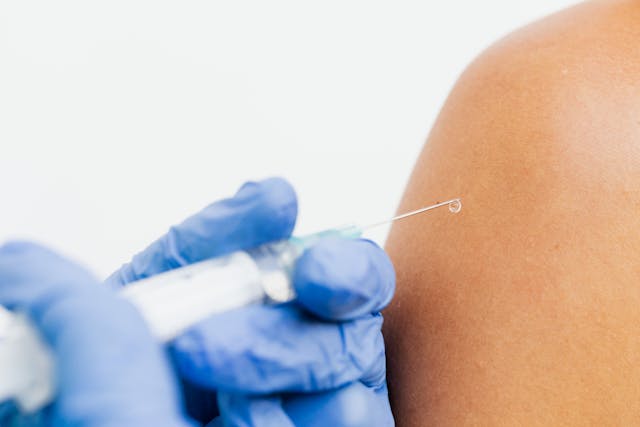Intravenous Immunoglobulin (IVIG) Market is Projected to Expand at a CAGR of 8.1% from 2018 to 2026
Transparency Market Research (TMR) (www.transparencymarketresearch.com) has published a new report titled, “Intravenous Immunoglobulin Market – Global Industry Analysis, Size, Share, Growth, Trends, and Forecast, 2018–2026”. According to the report, the global intravenous immunoglobulin market was valued at US$ 8,983.5 Mn in 2017 and is projected to expand at a CAGR of 8.1% from 2018 to 2026. Rapid innovation in and development of blood plasma derived products have enabled physicians across the globe to achieve timely and adequate disease management, thereby providing superior quality patient care. The global intravenous immunoglobulin market is expected to witness robust growth in the near future due to rise in prevalence of autoimmune disorders, increase in the global geriatric population, surge in IVIG usage in off-label indications, high demand for more reliable and adequate treatment measures, and increase in incidence of various hematological and neurological disorders. Moreover, improved technology for production and purification methods have fueled demand for IVIG.
Planning To Lay Down Future Strategy? Request Brochure Of Intravenous Immunoglobulin (IVIG) Market
https://www.transparencymarketresearch.com/sample/sample.php?flag=B&rep_id=1930
Neurological Disorders Segment to Capture Largest Market Share
The report offers detailed segmentation of the global intravenous immunoglobulin market. Based on indication, the chronic inflammatory demyelinating polyneuropathy (CIDP) disease segment dominated the market in terms of revenue in 2017. Chronic inflammatory demyelinating polyneuropathy (CIDP), myasthenia gravis, and multifocal motor neuropathy (MMN) are the other major segments of the market. Over 40% of global IVIG is used to treat neurological diseases. Rise in incidence of hematological and neurological disorders is a major factor driving the market. For instance, the occurrence of myasthenia gravis in the U.S. has been assessed at 14 to 20 per 100,000 people; around 36,000 to 60,000 cases in the country. Moreover, the geriatric population is more vulnerable to diseases due to poor immunity. According to the WHO, the global geriatric population is expected to increase from 524 million in 2010 to 1.5 billion by 2050. This is anticipated to drive demand for better immunological treatments, which in turn would provide opportunities for the companies operating in the global intravenous immunoglobulin market.
Home Care Segment to Grow at Rapid Pace
Hospitals, clinics, and home care are the major end-users of intravenous immunoglobulin (IVIG). The hospitals segment accounted for significant market share in 2017, followed by the home care segment. Increase in the number of patients opting for hospitals rather than clinics is a major driver of the hospitals segment. High budgetary expenditure, rise in government investment, and better reimbursement policies also augment the hospitals segment. The home care segment is anticipated to expand at a high CAGR during the forecast period due to changing tendency of patients for better care at home, mostly in the developed countries. IVIG infusion is a time consuming procedure, wherein infusion takes place at a slow rate for a long period of time. This increases patient inclination toward home care for treatment. Hence, home care is anticipated to be the most lucrative end-user segment of the global intravenous immunoglobulin market during the forecast period.
To Obtain All-Inclusive Information On Forecast Analysis Of Intravenous Immunoglobulin (IVIG) Market , Request A Discount
https://www.transparencymarketresearch.com/sample/sample.php?flag=D&rep_id=1930
Presence of Large Underserved Patient Population and Rise in Investment by Key Players to drive Asia Pacific Market
In terms of revenue, North America dominated the global intravenous immunoglobulin market in 2017. The U.S. FDA approval for payments to plasma donors to encourage plasma donation and boost yield is a major factor driving the market in the region. This has helped the country to not only become self-sufficient in plasma supply, but also a major exporter of plasma derived products. However, the region is estimated to lose market share in the near future owing to loss of patents and emerging low cost generics. Asia Pacific held a major share of the market in 2017, attributed to high prevalence of diseases, rise in health care spending, and increase in the geriatric population.
The market in Asia Pacific is expected to expand at a high CAGR during the forecast period from 2018 to 2026. Large patient pool, developing economies, and presence of large underserved patient population are the key factors augmenting the intravenous immunoglobulin market in the region. The booming medical tourism driven by rise in government support and incorporation of different schemes to avail better treatment for patients is also likely to propel the market in Asia Pacific. The region is the fastest developing market, as it is home to major producers of intravenous immunoglobulin. Strong distribution network in countries in Asia due to growing economy offers significant investment opportunities for market players.
Request For Covid19 Impact Analysis –
https://www.transparencymarketresearch.com/sample/sample.php?flag=covid19&rep_id=1930
Consolidated Market Dominated by Grifols, S.A., Shire plc, and CSL Behring
The report also provides profiles of leading players operating in the global intravenous immunoglobulin market. Grifols, S.A., Shire plc, and CSL Behring LLC are the major players accounting for 50% to 60% market share. Other players include ADMA Biologics, Inc., China Biologic Products, Inc., Grifols S.A., Kedrion S.p.A., LFB Biomedicaments S.A., Octapharma AG, and Sanquin Plasma Products B.V.
The global intravenous immunoglobulin market is characterized by the presence of major companies competing against each other primarily in terms of limited side effects, product efficacy, prolonged action, robust pipeline, and operational base. These players focus on launching new and improved therapies and are making significant investments in R&D to gain market share.


